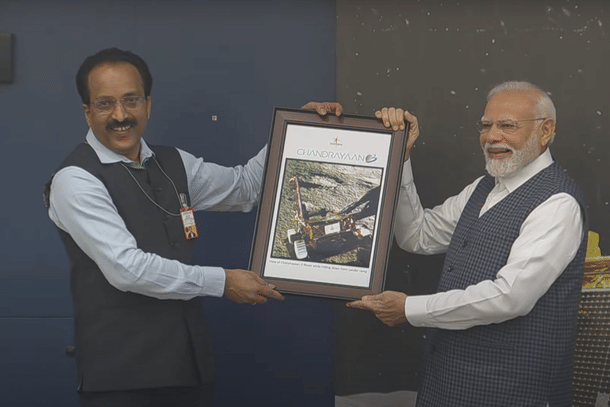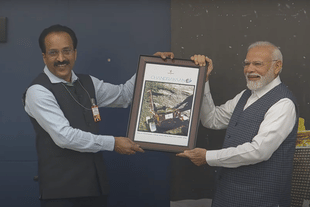News Headlines
PM Modi Urges Establishing Indian Space Station By 2035, Sending First Indian To Moon By 2040 In Gaganyaan Review
Nishtha Anushree
Oct 17, 2023, 02:13 PM | Updated 02:13 PM IST
Save & read from anywhere!
Bookmark stories for easy access on any device or the Swarajya app.


Prime Minister Narendra Modi led a high-level meeting on Tuesday (17 October) to review the progress of India’s Gaganyaan Mission and to chart the course for the country’s future in space exploration.
Building on the achievements of recent Indian space initiatives, including the Chandrayaan-3 and Aditya L1 Missions, the PM directed India to aspire to new and ambitious goals.
This includes establishing the 'Bharatiya Antariksha Station' (Indian Space Station) by 2035 and sending the first Indian to the Moon by 2040.
To achieve this vision, the Department of Space will formulate a roadmap for Moon exploration, involving a series of Chandrayaan missions, the development of a Next Generation Launch Vehicle (NGLV), the construction of a new launch pad, and the establishment of human-centric laboratories and associated technologies.
Modi also urged Indian scientists to focus on interplanetary missions, including a Venus Orbiter Mission and a Mars Lander. Expressing confidence in India’s capabilities, he affirmed the nation's commitment to reaching new heights in space exploration.
The Department of Space provided a comprehensive overview of the Gaganyaan Mission, highlighting technological advancements such as human-rated launch vehicles and system qualification.
The meeting discussed plans for approximately 20 major tests, including three uncrewed missions of the Human Rated Launch Vehicle (HLVM3).
The initial demonstration flight of the Crew Escape System Test Vehicle is set for 21 October. The meeting assessed the mission's readiness, confirming its scheduled launch in 2025.
Nishtha Anushree is Senior Sub-editor at Swarajya. She tweets at @nishthaanushree.





